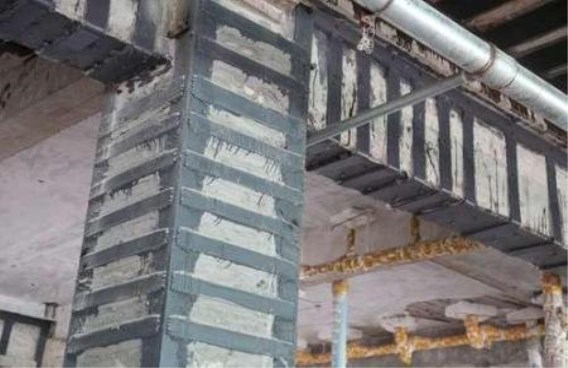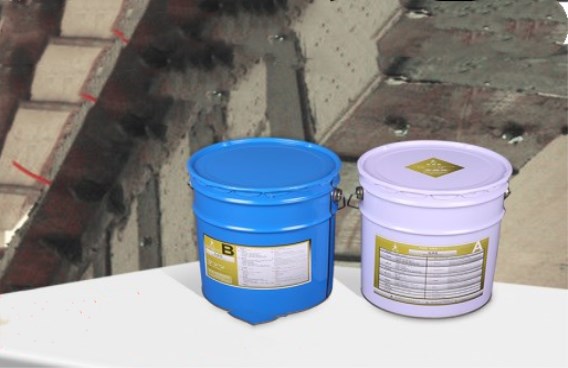The bonded steel reinforcement method is a commonly used technical means in the reinforcement engineering. Generally, the steel plate is bonded to the surface of the concrete member by a high-performance epoxy adhesive, so that the steel plate and the concrete form a unified whole. Using the good tensile strength of the steel plate to achieve the purpose of enhancing the bearing capacity and rigidity of the member. Steel reinforcement has the advantages of simple construction and small space occupation. The reinforcement effect of this method depends on the bonding process and the degree of operation to a large extent. In some reinforcement projects, there may be a lack of bonding strength between the steel plate and the concrete, which leads to a reduction in the overall reinforcement effect. What should be done if this phenomenon occurs?

The picture of sticking steel method for strengthening the site
What conditions can cause insufficient bond strength between steel plate and concrete?
1. The glue injection hole and the vent hole are not properly set, and the glue injection construction sequence of the house reinforcement is not correct:
Treatment plan:
(1) The spacing between the injection hole and the vent hole should be determined according to the actual conditions, and should not exceed 50CM.
(2) The bottom end of the bonded steel plate shall be provided with glue injection holes. The high position, edge and corner shall be provided with vent holes. Confirm that the left side of the vent hole has been filled with glue and the glue is released on average, and then the vent hole is stopped.
(3) When the glue is injected, the standard line from low to high and from one end to the other end should be followed to prevent disorderly operation, and ensure that the glue injection nozzle and the vent hole are glued out and then change the position of the injection.
(4) When injecting the glue, use a small hammer to strike the steel plate to determine the direction of the glue activity, and adjust the operation in time.
2. The gap between steel plate and concrete is uneven, and the speed of injection is too fast:
Treatment plan:
(1) The average distribution of the gap between the steel plate and the concrete can be ensured as much as possible;
(2) Low-speed average injection to ensure the penetration of glue and activity;
(3) When injecting the glue, tap the steel plate with a small hammer to determine the direction of the glue activity, and adjust the operation in time.
3. Due to the soaking of the glue into the concrete, the top or corner position of the rubber layer is voided:
Treatment plan:
(1) Low-speed slow-injection construction is recommended for house reinforcement;
(2) The high-grade injection hole and vent hole should be pressurized and filled, and should be replenished when the status of the glue drops.
(3) Vents should be provided for high position or corners.
4. Leakage of glue happens because of lack of sealing
Treatment plan:
(1) Ensure that no leakage of glue around the steel plate, glue nozzle or vent hole;
(2) Seal the glue nozzle and vent hole in time.

Once the bonding strength between steel plate and concrete is insufficient, it will affect the reinforcement effect, but it will endanger the safety of the whole building. Therefore, we must pay great attention to it. We must choose a formal production and professional construction team. Nanjing Mankate has focused on the reinforcement industry for 16 years. We have rich industry experience. If you need help, please feel free to contact Mankate. Mankate is always willing to help you~